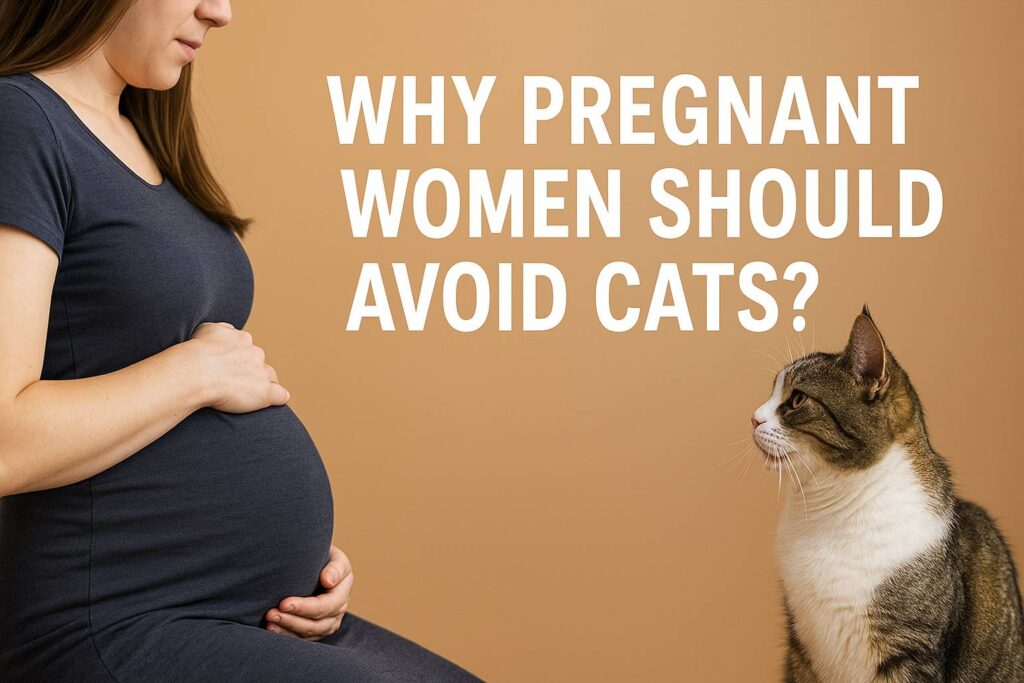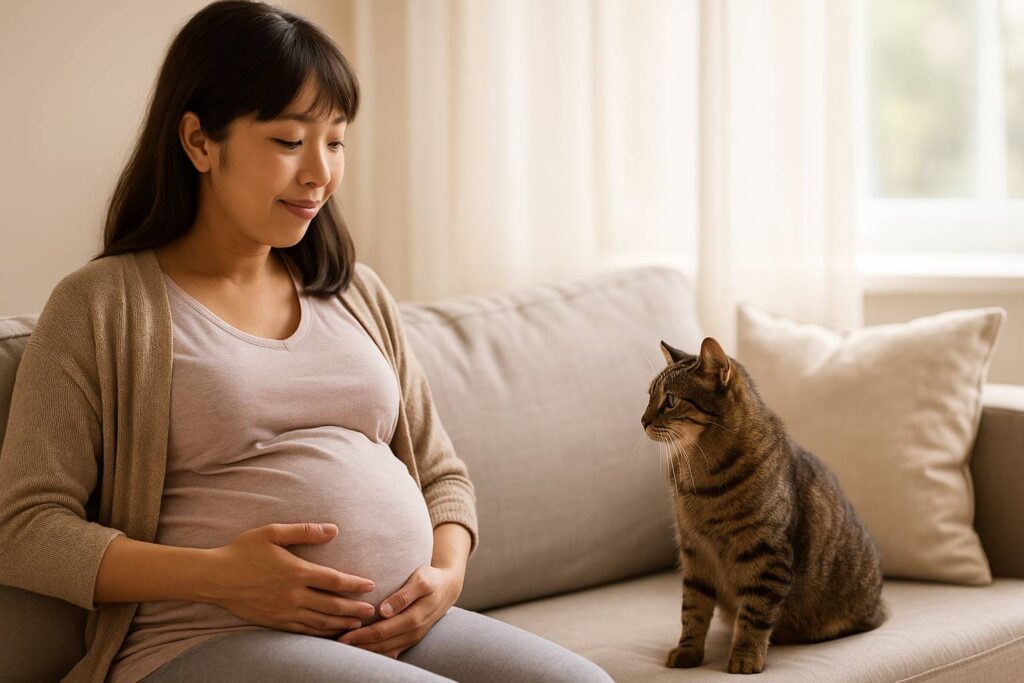
For many cat lovers, pregnancy raises a question: Should you avoid cats while pregnant? While the bond with a pet is precious, there is a medical concern that makes caution necessary — toxoplasmosis, a parasitic infection that can pose risks to the unborn baby. This article explains how the risk arises, when it matters most, and what smart steps pregnant women can take to stay safe without giving up a beloved feline companion.
What Is Toxoplasmosis & Why Does It Matter in Pregnancy?
- Toxoplasmosis is caused by the parasite Toxoplasma gondii, which can infect many warm-blooded animals, including humans.
- Cats are the definitive host: the parasite reproduces in the cat’s intestines, and cats shed microscopic cysts (oocysts) in their feces.
- If a woman catches a new infection during pregnancy and it crosses the placenta, it can lead to serious outcomes such as miscarriage, stillbirth, or congenital defects in the baby.
- Many women already have immunity from earlier exposure, but new infections during pregnancy are the main concern.
How Is Transmission Possible?
You don’t catch toxoplasmosis merely by petting your cat. The real danger comes from ingesting oocysts:
- Oocysts in cat feces become infectious one to five days after they are shed, so cleaning litter boxes promptly reduces risk.
- Gardening or handling soil where cats may defecate can expose you to oocysts in dirt or sand.
- Eating undercooked or raw meat that contains cysts is another major route of infection — often more common than direct exposure via cats.
Which Cats Pose Higher Risks?
Not every cat is equally likely to transmit the parasite. Higher-risk scenarios include:
- Outdoor or hunting cats that consume rodents or birds.
- Cats fed raw meat.
- Young cats (experiencing first exposure) that may shed more oocysts than older cats who’ve already developed immunity.
Fully indoor cats, fed cooked or commercial food and with no exposure to wild prey, are typically much less risky.
What Precautions Should Pregnant Women Take?

You don’t necessarily have to part with your cat. But these safety steps are important:
- Avoid cleaning the litter box — let someone else handle it.
- If you must, wear gloves and a mask, clean it daily, and wash hands afterward.
- Keep your cat indoors to minimize exposure to infected prey or other cats.
- Feed your cat only cooked or commercial food.
- Wear gloves when gardening or touching soil.
- Wash fruits, vegetables, and hands thoroughly.
- Avoid adopting new or stray cats during pregnancy.
Medical professionals confirm that with these precautions, many pregnant women safely keep their cats without infection.
Quick Facts
- Parasite name: Toxoplasma gondii
- Infectious stage in cats: oocysts in feces
- Risk period: when a woman gets newly infected during pregnancy
- Main risk routes: litter box, contaminated soil, undercooked meat
- Lower risk: indoor cats, hygienic practices, avoiding raw meat
FAQs
Can being around cats in general harm me during pregnancy?
Not necessarily. The main concern is contact with infective oocysts in cat feces. Petting or cuddling a healthy indoor cat is unlikely to cause infection if hygiene is maintained.
Should I give up my cat while pregnant?
In most cases, no. With precautions, keeping your cat is possible and safe.
When is the risk greatest?
If a woman acquires toxoplasmosis for the first time during pregnancy, especially in the first or second trimester, the risk of congenital transmission is higher.
Conclusion
Cats themselves aren’t the enemy — the risk lies in a microscopic parasite hidden in feces. For pregnant women, the key is awareness, hygiene, and precaution. With the right steps — avoiding litter box duties, safe gardening, and good cat care — the bond between expectant mothers and their feline friends can remain intact and safe.


